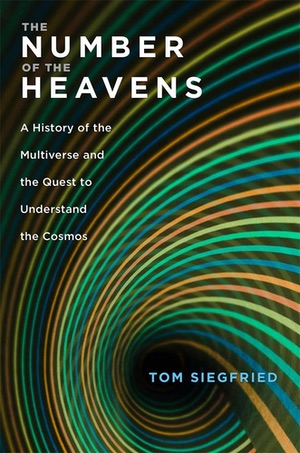Review: The Number of the Heavensby Jeff Foust
|
| Science, he writes, “is not a preordained process governed by never-changing methods and rules. It’s a quest to explain the world.” |
While “multiverse” is in the book’s subtitle, and Siegfried starts the book with contemporary discussions about it, much of the book is a historical account of how our understanding of just what comprises the universe has evolved. That evolution has been an expansion, from the Greek notion of an Earth surrounded by a series of concentric spheres to a Sun-centric solar system and then, just in the last century, the modern concept of our Sun being one of hundreds of billions in a galaxy that is one of hundreds of billions.
That is a familiar story, and the book includes some famous figures who played key roles in that reassessment of the universe, from Copernicus to Hubble. There are, though, some lesser-known individuals given their due. One example is Robert Grosseteste, a 13th century scholar who developed a cosmological model of sorts to explain the Aristotelian spheres, one that implied the existence of a multiverse. Siegfried also discusses the “condemnation of 1277,” a series of edicts by the bishop of Paris that, in the name of God’s infinite power, gave scholars the freedom to contemplate a bigger universe and is considered by some historians to be a milestone in the emergence of science as a discipline.
The latter part of the book returns to the present day and the debate about whether multiple universes can exist. Models of inflation, intended to explain the early Big Bang, also allowed the creation of other bubbles or “mini-universes,” a concept that gained support with the discovery that the expansion of our universe was accelerating because of dark energy. “Multiple universes are not a bug in inflationary theory; they are a feature,” Siegfried writes.
The accelerating universe allowed the idea of multiverse to go mainstream, he writes, but that doesn’t mean it’s widely accepted. Some scientists bristle at its acceptance of the anthropic principle, which states that the fundamental aspects of the universe are tuned for the existence of life. Others take issue with the multiverse concept since those other universes cannot be observed, nor does the model make predictions that can be tested and either confirmed or rejected.
Siegfried uses the epilogue of the book to address those concerns. There may be ways to test the multiverse if our universe intersects with a neighboring one, he says, but such tests may not be required, depending on how one views science itself. Science, he writes, “is not a preordained process governed by never-changing methods and rules. It’s a quest to explain the world.” Or, in this case, a multitude of worlds in this universe and others.
Note: we are temporarily moderating all comments subcommitted to deal with a surge in spam.
